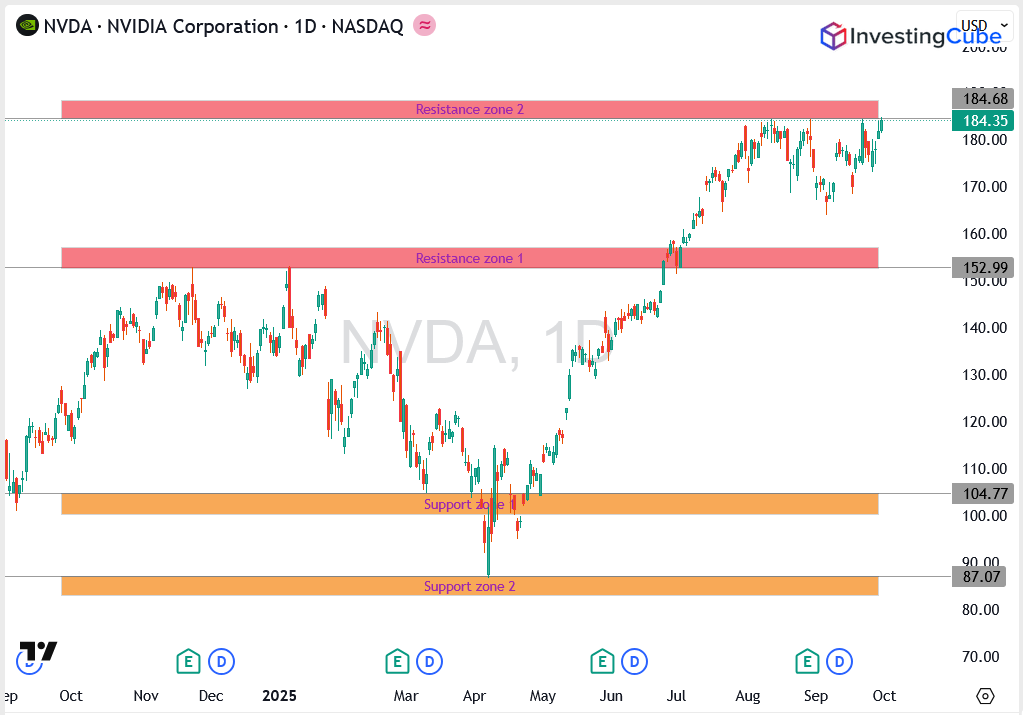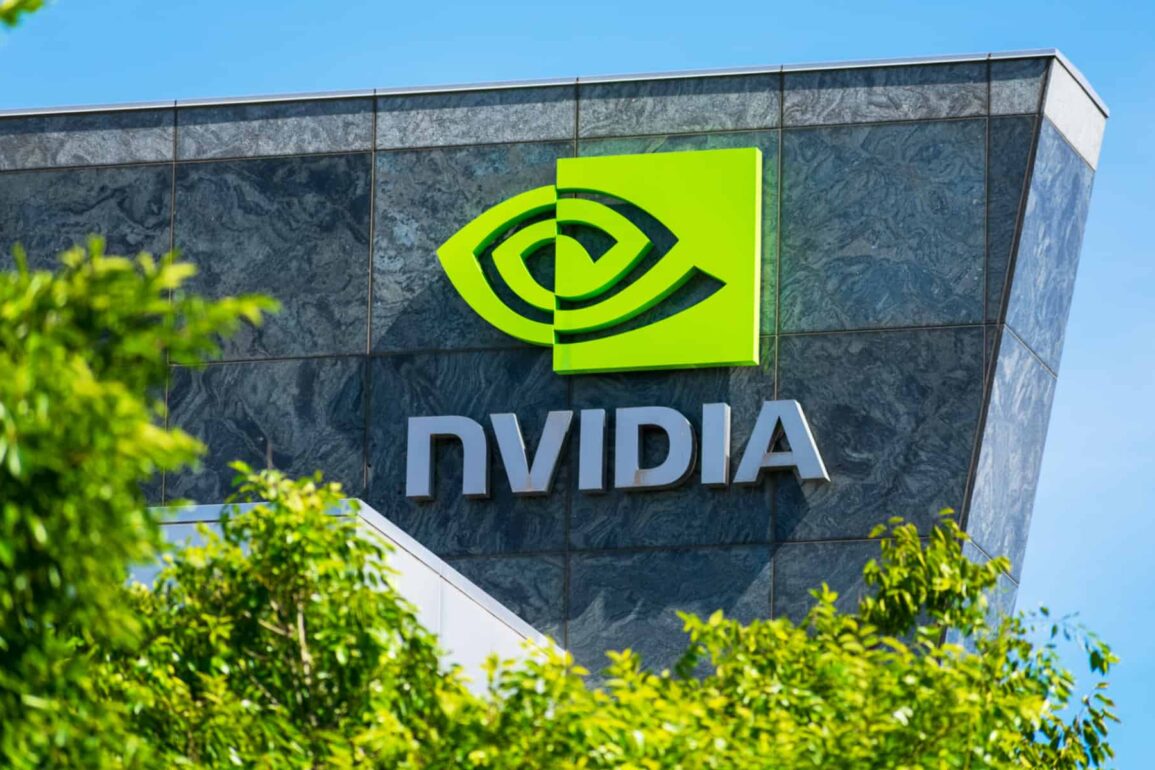NVIDIA (NASDAQ: NVDA) Shares are pinned near $184 after a fresh run of catalysts: headlines around NVIDIA backing OpenAI’s next compute build with potential funding capacity cited near $100 billion across partners, Evercore lifting its target to $225 and Barclays to $240, and a clean Q2 beat (EPS $1.05 on revenue $46.74 billion).
Into month-end, CEO Jensen Huang also sold about $40.2 million of stock. With those drivers in the tape, the chart sits just under the $184–$185 ceiling that has capped recent pushes, which is the hinge for any near-term breakout in the NVIDIA price prediction and forecast narrative.
NVIDIA Price Prediction for 2025
Most analysts still lean bullish, with forecasts pointing to NVIDIA climbing into the $200–$225 range by late 2025 if the AI trade keeps its momentum and regulators don’t throw up fresh roadblocks. Price targets have been creeping higher across Wall Street as the company keeps beating both revenue and earnings lines, reminding investors why it’s still the face of the AI boom.
The market’s base case is simple: NVIDIA stays in an uptrend. Pullbacks into support zones aren’t being treated as red flags, they’re being scooped up as chances for long-term investors to reload.
NVIDIA Price Forecast 2030: Can the Rally Last?
Looking further ahead, the NVIDIA price forecast for 2030 is where things get more interesting. Analysts see a wide range of outcomes:
- Bullish scenario: NVIDIA scales new heights, trading above $250–$300 by 2030, supported by its dominance in GPUs, expansion into automotive AI, and its software ecosystem.
- Moderate case: Shares hold steady in the $200–$250 band as growth normalizes but remains robust.
- Bear case: Rising competition from rivals such as AMD and Huawei, combined with regulatory pressures in the U.S. and China, could slow the pace, leaving the stock closer to $150–$170.
The long-term path depends on how NVIDIA balances extraordinary growth opportunities with the risks of over-concentration in AI hardware.
Huawei and Alibaba Challenge NVIDIA’s Growth in China
While the U.S. market has fueled much of NVIDIA’s rise, China remains both a vast opportunity and a growing headache. U.S. export restrictions have already forced NVIDIA to pause or rework some of its chip offerings for Chinese buyers, creating room for domestic rivals to step in.
Huawei is ramping up its AI chip production, with output expected to double by 2026. With strong state backing, the company is quickly becoming a real competitor to NVIDIA, especially in high-performance chips that power data centers and advanced cloud systems.
Alibaba is pushing in the same direction. Its cloud unit is developing in-house accelerators designed to reduce dependence on U.S. technology and give local customers more homegrown options. Together, Huawei and Alibaba are leading China’s drive to cut reliance on American chips, and that puts NVIDIA’s market share in the region at risk faster than many investors may be pricing in.
This doesn’t break NVIDIA’s global story, its dominance in AI hardware outside China remains intact, but it does create a ceiling effect on long-term growth projections unless new markets offset the risk.
NVIDIA Stock Technical Analysis: Support and Resistance Levels
- Support zone: $152–$160 – dips into this area have consistently attracted buyers.
- Resistance zone: $184–$185 – a breakout here could open the path to $200+.
- Stretch target: $225 – achievable if momentum persists and AI demand surprises to the upside.

Tactically, traders will be watching how price reacts around the resistance band. Sustained rejection without follow-through would suggest waiting for cleaner signals.
Final Thoughts: NVIDIA’s Future Through 2030
The NVIDIA price prediction and forecast through 2025–2030 is not about whether the company remains dominant, that part is clear. It is about how much of that dominance is already priced into the stock.
As things stand, the outlook remains constructive, with demand for AI infrastructure continuing to drive the story. But the combination of valuation, geopolitics, and emerging competition means investors should expect more volatility on the road to 2030.
For now, NVIDIA remains the defining stock of the AI era, but its next chapter will test whether it can remain more than just a market phenomenon.
Nvidia FAQs
Many analysts see room for growth out to 2030, with price targets ranging from $200 to $300+, depending on AI demand, global expansion, and whether NVIDIA can defend its dominance amid competition and regulatory pressure.
Absolutely, Huawei is ramping up AI chip output, and China’s push for self-reliance (including Alibaba’s in-house chip efforts) raises real competition. While it won’t topple NVIDIA globally overnight, it could cap growth in one of the most important markets.
This article was originally published on InvestingCube.com. Republishing without permission is prohibited.


